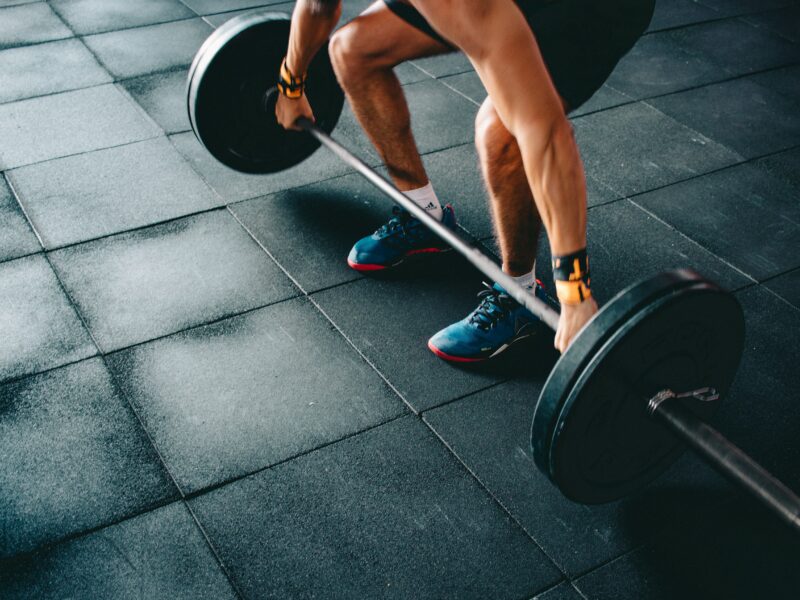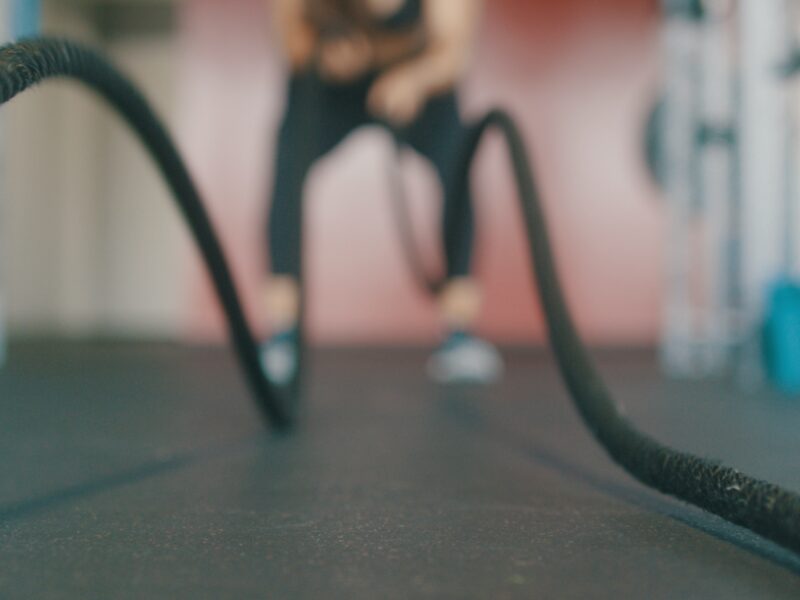Are you looking to make your workouts more effective and enjoyable? Look no further than fitness equipment! Whether you’re a seasoned gym-goer or just starting out, having the right equipment can make all the difference in reaching your fitness goals. From treadmills and weights to resistance bands and yoga mats, there is a wide variety of options to suit every exercise preference. So why wait? Take your workouts to the next level with the power of fitness equipment!
Types of Fitness Equipment
Cardiovascular Equipment
Cardiovascular equipment is designed to increase your heart rate and improve overall cardiovascular health. These machines are perfect for getting your heart pumping and burning calories. Some popular examples of cardiovascular equipment include treadmills, elliptical trainers, stationary bikes, rowing machines, and stair steppers. These machines provide a low-impact, efficient way to get your cardio workout and can be adjusted to fit your fitness level.
Strength Training Equipment
Strength training equipment is designed to help you build and tone your muscles. Whether you’re looking to increase your strength, improve your muscle definition, or enhance your athletic performance, strength training equipment is essential. Some common examples of strength training equipment include dumbbells, barbells, resistance bands, weight machines, kettlebells, and medicine balls. These tools allow you to target specific muscle groups and vary your workout routine for maximum results.
Flexibility Equipment
Flexibility equipment helps improve your flexibility and range of motion. Flexibility is crucial for preventing injuries, improving posture, and enhancing overall physical performance. Some popular flexibility equipment includes yoga mats, stretching straps, foam rollers, Pilates rings, and balance balls. These tools can be incorporated into your daily stretching routine or used during yoga or Pilates sessions to improve your flexibility and mobility.
Balance and Stability Equipment
Balance and stability equipment focus on improving your balance, coordination, and core strength. Having good balance and stability is essential for activities such as walking, running, and playing sports. Some common balance and stability equipment include balance boards, Bosu balls, wobble cushions, stability balls, and balance trainers. Incorporating these tools into your fitness routine can help you improve your overall stability and reduce the risk of falls and injuries.
Benefits of Fitness Equipment
Improved Cardiovascular Health
By regularly using cardiovascular equipment, you can improve your heart health and lower the risk of heart disease. Cardio exercises, such as running on a treadmill or cycling on a stationary bike, help strengthen your heart muscle, promote better blood circulation, and increase your stamina. Regular cardio workouts can also reduce blood pressure, lower cholesterol levels, and decrease the risk of obesity.
Enhanced Strength and Muscle Tone
Strength training equipment allows you to target specific muscle groups and increase muscle strength and tone. By incorporating strength exercises into your fitness routine, you can build lean muscle mass, improve your metabolism, and boost your overall strength and endurance. Whether you prefer using dumbbells, resistance bands, or weight machines, consistent strength training can lead to a more sculpted and defined physique.
Increased Flexibility and Range of Motion
Flexibility equipment is essential for improving your flexibility and range of motion. Regularly stretching using tools like yoga mats, foam rollers, and stretching straps can increase joint flexibility and muscle elasticity, making your movements more fluid and efficient. Improved flexibility can also alleviate muscle tension, reduce the risk of muscle strains, and improve posture and body alignment.
Improved Balance and Stability
By incorporating balance and stability equipment into your workouts, you can enhance your balance, coordination, and core strength. Balancing exercises using tools like balance boards and stability balls challenge your proprioception and help you develop a strong sense of balance and stability. Better balance can improve your athletic performance, prevent falls, and enhance overall functional fitness.
Weight Management and Fat Burning
Using fitness equipment, particularly cardiovascular machines, can help you manage your weight and burn excess body fat. Engaging in regular cardio workouts increases calorie expenditure, which can contribute to weight loss or weight maintenance. Combining cardio with strength training exercises also helps build lean muscle, which results in a higher metabolic rate and increased calorie burn even at rest.
Convenience and Accessibility
One of the greatest benefits of fitness equipment is the convenience and accessibility it offers. With your own equipment at home, you can exercise whenever it suits your schedule, without having to worry about gym hours or crowded facilities. Having fitness equipment readily available at home also eliminates the need for commuting or traveling to a gym, saving you time and effort. Plus, you have the freedom to choose your favorite exercises and customize your workout routine to meet your specific fitness goals.

Choosing the Right Fitness Equipment
Setting Goals and Assessing Needs
Before purchasing fitness equipment, it’s important to determine your fitness goals and assess your individual needs. Are you looking to improve cardiovascular health, build strength, increase flexibility, or focus on balance and stability? By identifying your goals, you can narrow down the types of equipment that will best meet your specific needs. Consider factors such as your current fitness level, any existing medical conditions or injuries, and what exercises you enjoy the most.
Consideration of Available Space
Another crucial aspect to consider when choosing fitness equipment is the available space in your home or workout area. Measure the dimensions of the space you have to work with, and ensure there is enough room for the equipment you’re considering. Take into account not only the space the equipment will occupy during use but also the space it will require for storage. Opt for compact equipment or folding options if you have limited space.
Budgetary Constraints
Setting a budget is an important step when purchasing fitness equipment. Determine how much you’re willing to invest in your home gym and search for options that fit within your budget. Keep in mind that while some equipment may have a higher upfront cost, it can save you money in the long run compared to expensive gym memberships or fitness classes. Look for high-quality, durable equipment that offers good value for your money.
Safety and User-Friendliness
Safety should always be a priority when choosing fitness equipment. Ensure that the equipment you select is sturdy, stable, and built with high-quality materials. Check for safety features such as non-slip surfaces, adjustable settings, and proper weight capacities. Additionally, consider the ease of use and accessibility of the equipment. Look for intuitive controls, clear instructions, and equipment that suits your fitness level and abilities.
Durability and Maintenance
Investing in durable fitness equipment is essential to ensure its longevity and long-term usability. Look for equipment made from high-quality materials that can withstand heavy use and withstand the test of time. Consider the warranty provided by the manufacturer, as it can be an indicator of the product’s quality and durability. Additionally, be prepared to perform regular maintenance tasks, such as lubricating moving parts and cleaning or sanitizing the equipment to keep it in optimal condition.
Variety and Versatility
To keep your workouts engaging and prevent boredom, consider equipment that offers a variety of exercises or training options. Look for equipment that allows you to adjust resistance levels, change incline or decline angles, or provides different grip or handle variations. Having versatile equipment allows you to target different muscle groups and create diverse workout routines, keeping your fitness journey exciting and effective.
Expert Recommendations and Reviews
Before making a purchase, it’s helpful to read expert recommendations and reviews of the fitness equipment you’re considering. Look for reputable fitness websites, magazines, or blogs that provide unbiased reviews and recommendations. Take into consideration factors such as durability, ease of use, value for money, and customer satisfaction. Learning from others’ experiences can help you make an informed decision and ensure you’re investing in the right equipment.
Trial and Testing
Whenever possible, try out the fitness equipment before purchasing. Visit a local fitness equipment store or gym that has similar equipment available and test it out. Pay attention to how comfortable and easy to use the equipment feels, and assess whether it fits your body size and fitness level. Trying out the equipment allows you to determine if it suits your preferences, provides enough challenge, and meets your fitness goals.
Popular Cardiovascular Fitness Equipment
Treadmills
Treadmills are one of the most popular cardiovascular machines for home fitness. They provide a convenient way to walk, jog, or run indoors, regardless of the weather conditions. Treadmills come with adjustable speed and incline settings, allowing you to customize your workout intensity. Many treadmills also offer features like heart rate monitoring, preset workout programs, and multimedia capabilities for added motivation and entertainment.
Elliptical Trainers
Elliptical trainers offer a low-impact yet effective cardiovascular workout. These machines simulate the motion of walking, jogging, or running, without placing excessive stress on the joints. Elliptical trainers often come with handlebars that allow for an upper body workout as well, making it a full-body exercise option. Many elliptical trainers offer adjustable resistance levels, customizable workout programs, and heart rate monitoring features.
Stationary Bikes
Stationary bikes are a popular choice for cardiovascular workouts, especially for those with joint or lower-body issues. These bikes provide a low-impact workout that targets the lower body muscles, including the quads, hamstrings, and glutes. Stationary bikes offer various resistance levels and preset workout programs, allowing you to tailor your workout to your fitness level. They are also relatively compact and easy to store away when not in use.
Rowing Machines
Rowing machines provide a full-body cardiovascular workout, engaging muscles in the arms, legs, back, and core. Rowing is a low-impact exercise that offers high calorie-burning potential. Rowing machines often come with adjustable resistance levels and different workout programs, allowing both beginners and advanced users to challenge themselves. These machines simulate the motion of rowing a boat, providing a fun and effective way to improve cardiovascular fitness.
Stair Steppers
Stair steppers offer a challenging cardiovascular workout by mimicking the motion of climbing stairs. These machines work the leg muscles, including the calves, quads, and glutes, while also increasing heart rate and calorie burn. Stair steppers often come with adjustable resistance settings and built-in step counters to track your progress. They provide an excellent option for those looking to simulate climbing stairs indoors.
Aerobic Steppers
Aerobic steppers offer a versatile cardiovascular workout option. These portable platforms can be adjusted to different heights, allowing you to modify the intensity of your workout. Stepping up and down the aerobic stepper engages the leg muscles, increases heart rate, and improves coordination and balance. Aerobic steppers often come with workout DVDs or online tutorials to provide guidance and inspiration for your exercise routine.
Jump Ropes
Jumping rope is a classic and effective cardiovascular exercise. It requires minimal equipment and space, making it a convenient option for home workouts. Jumping rope not only increases heart rate and burns calories but also improves coordination, agility, and footwork. Skipping rope can be adjusted to different speeds and intensity levels, providing a customizable workout for all fitness levels.
Incline Trainers
Incline trainers are similar to treadmills but offer the additional feature of adjustable incline settings. These machines allow you to simulate uphill walking or running, increasing the challenge of your cardiovascular workout. Incline trainers engage more leg muscles, including the calves and glutes, and provide a significant calorie-burning potential. Adjust the incline and speed according to your fitness level for a challenging yet effective workout.
Recumbent Bikes
Recumbent bikes provide a comfortable and supportive way to engage in cardiovascular exercise, particularly for those with back or joint issues. These bikes feature a reclined, ergonomic seat with a backrest, which reduces strain on the lower back while promoting good posture. Recumbent bikes provide a low-impact workout that targets the leg muscles and increases heart rate. Many models offer adjustable resistance levels and built-in workout programs.
Cross Trainers
Cross trainers, also known as ellipticals or elliptical cross trainers, combine the movements of a treadmill, stair stepper, and stationary bike into one machine. These versatile cardiovascular machines offer a full-body workout, engaging both the upper and lower body muscles. Cross trainers typically come with adjustable resistance levels, built-in workout programs, and features like heart rate monitoring. They provide a highly effective and efficient way to improve cardiovascular fitness.

Effective Strength Training Equipment
Dumbbells
Dumbbells are one of the most versatile pieces of strength training equipment. They come in various weights and can be used for a wide range of exercises, targeting different muscle groups. Dumbbells allow you to perform exercises such as bicep curls, shoulder presses, squats, lunges, and rows. They are suitable for both beginners and advanced fitness enthusiasts and can be used for both isolation and compound exercises.
Barbells
Barbells are long bars with weights attached to either end. They are commonly used in strength training exercises such as squats, deadlifts, bench presses, and overhead presses. Barbells offer the ability to lift heavy weights and target larger muscle groups. They provide a more balanced and stable grip compared to dumbbells and allow for progressive overload, making them ideal for building overall strength and muscle mass.
Resistance Bands
Resistance bands are flexible bands made from strong rubber or latex that provide resistance when stretched. They are portable, affordable, and suitable for all fitness levels. Resistance bands can be used to target specific muscle groups by incorporating them into exercises such as bicep curls, lateral raises, chest presses, and squats. They offer a versatile and convenient way to build both strength and muscle tone.
Weight Machines
Weight machines are designed to target specific muscle groups with guided movements. These machines often utilize a stack of weights or plates to provide resistance. Weight machines are user-friendly and especially beneficial for beginners or individuals recovering from injuries. They allow for controlled movements and can isolate specific muscle groups without the need for balancing or stabilizing. Weight machines are commonly found in gyms but can also be purchased for home use.
Kettlebells
Kettlebells are a type of free weight shaped like a ball with a handle attached. They provide a dynamic and functional way to build strength and improve overall fitness. Kettlebell exercises involve swinging, lifting, and holding the kettlebell in various positions, engaging multiple muscle groups simultaneously. Kettlebells are available in different weights, and exercises can be modified to suit all fitness levels.
Medicine Balls
Medicine balls are weighted balls designed for various strength training exercises. They come in different sizes and weights, allowing for a wide range of exercises that target different muscle groups. Medicine balls can be used for exercises such as Russian twists, medicine ball slams, wall balls, and chest passes. They provide a functional and versatile way to build strength, power, and core stability.
Suspension Trainers
Suspension trainers, commonly known as TRX, are portable training systems that use bodyweight and gravity for resistance. Suspension trainers consist of adjustable straps with handles, allowing for hundreds of exercises targeting all major muscle groups. TRX exercises are highly versatile and can be modified to suit different fitness levels. Suspension trainers are especially beneficial for developing core strength, stability, and total-body strength.
Battle Ropes
Battle ropes are long, thick ropes that offer a high-intensity, full-body workout. These ropes can be anchored to a stationary object and used to perform various exercises. Battle rope exercises involve making waves, slams, or spirals with the ropes, engaging the muscles in your arms, shoulders, back, core, and legs. Battle ropes provide a challenging cardiovascular workout while also building strength and endurance.
Bench Press
Bench presses are a classic strength training exercise that primarily targets the muscles in your chest, shoulders, and triceps. This exercise is typically performed using a weight bench and a barbell or dumbbells. Bench presses can be done with a flat, incline, or decline bench to target different areas of the chest. They are one of the most effective exercises for developing upper body strength, power, and muscle mass.
Pull-Up Bars
Pull-up bars are simple yet effective equipment for upper body and core strength training. They can be mounted on walls or doorframes and allow you to perform various pull-up and chin-up variations. Pull-ups engage multiple muscles in the back, arms, and shoulders, including the latissimus dorsi, biceps, and rhomboids. Pull-up bars provide a challenging and effective way to develop upper body strength and increase muscular endurance.
Flexibility Training Equipment
Yoga Mats
Yoga mats are essential for practicing yoga, Pilates, or any floor-based stretching exercises. They provide cushioning, support, and a non-slip surface for your hands and feet. Yoga mats come in different thicknesses and materials, allowing you to choose the one that suits your preference and practice. Using a yoga mat enhances your comfort, stability, and grip during stretching exercises, ensuring safety and proper alignment.
Stretching Straps
Stretching straps, also known as flexibility bands or yoga straps, aid in enhancing your flexibility and range of motion. These straps are typically made from nylon or cotton and feature multiple loops or handles. Stretching straps allow you to deepen your stretches by providing support and assistance in stretching exercises. They are especially useful for individuals with limited flexibility or those recovering from injuries.
Foam Rollers
Foam rollers are cylindrical-shaped tools made from dense foam that help release muscle tension and improve flexibility. Foam rolling, also known as self-myofascial release, involves rolling specific muscle groups over the foam roller to alleviate muscle tightness and knots. Foam rollers can be used before or after workouts to warm up or cool down muscles, increase blood flow, and reduce muscle soreness.
Pilates Rings
Pilates rings, also called magic circles, are resistance rings used in Pilates exercises to target specific muscle groups. These rings are typically made from metal or rubber with padded handles. Pilates rings provide resistance when squeezed or pressed between the hands or legs, targeting muscles in the arms, chest, back, and inner and outer thighs. They are particularly effective in toning and strengthening the core muscles.
Balance Balls
Balance balls, also known as stability balls or exercise balls, are large, inflatable balls used for various exercises to improve balance, stability, and core strength. Sitting or lying on a balance ball engages the core muscles, as they work to stabilize the body. Balance balls can also be used for exercises such as squats, lunges, push-ups, and planks to add an extra challenge to your workout.
Resistance Bands
Resistance bands, mentioned earlier in the strength training section, are also excellent tools for improving flexibility. Incorporating resistance bands into stretching exercises can provide a deeper stretch and help improve flexibility over time. Resistance bands can be used for both static stretching and dynamic stretching movements, assisting in increasing flexibility in various muscle groups.
Yoga Blocks
Yoga blocks are lightweight foam blocks that aid in providing support, stability, and proper alignment in yoga or stretching exercises. These blocks come in different sizes and can be placed under the hands, feet, or hips to modify poses and help maintain balance and flexibility. Yoga blocks are beneficial for beginners or individuals with limited flexibility, as they allow for a gradual progression into deeper stretches.
Flexibility Bands
Flexibility bands, also known as resistance or stretch bands, are versatile tools for improving flexibility and enhancing stretching exercises. These bands are typically made from rubber, latex, or fabric and provide resistance when stretched. Flexibility bands can be used to deepen stretches, assist in achieving challenging positions, or improve dynamic flexibility through exercises such as leg swings or arm circles.
Ankle Weights
Ankle weights are weighted bands that can be attached around the ankles to add resistance to lower body exercises or increase the challenge of flexibility training. Ankle weights come in different weights and are particularly useful for building lower body strength, toning leg muscles, and improving balance and stability during exercises like leg lifts, hip abductions, or standing yoga poses.
Massage Balls
Massage balls are small, portable tools that can be used for self-myofascial release or targeted muscle massage. These balls are typically made from rubber or foam and can be rolled over tight or sore muscles to release muscle tension and promote flexibility. Massage balls are particularly effective for targeting smaller muscle groups, such as the feet, glutes, shoulders, or neck, providing deep tissue massage and pain relief.

Balance and Stability Equipment
Balance Boards
Balance boards are platforms with a fulcrum or pivot point that challenge your balance and stability. These boards engage muscles in the legs, core, and ankles as you try to maintain balance while standing or performing exercises. Balance boards are available in various designs, including circular, wobble, or rocker boards. They are excellent tools for improving posture, stability, and coordination.
Bosu Balls
Bosu balls are half-sphere-shaped stability training tools that can be used with either the dome or base side facing up. Bosu stands for “both sides up.” The dome side offers an unstable surface, suitable for exercises that challenge balance and stability. The base side provides a more stable surface for exercises like planks, push-ups, or lunges. Bosu balls are versatile equipment that helps develop core strength, improve balance, and enhance overall stability.
Wobble Cushions
Wobble cushions, also known as balance cushions or stability discs, are inflatable cushions that challenge your balance and stability while sitting or standing. These cushions have an uneven, wobbly surface that engages the core muscles as you try to maintain balance. Wobble cushions can be used for exercises such as squats, lunges, or standing balance poses, promoting core strength and improving overall stability.
Stability Balls
Stability balls, also called Swiss balls or exercise balls, are large inflatable balls used for a variety of exercises, including balance, strength, and flexibility training. These balls come in different sizes to accommodate different heights. Stability balls engage the core muscles as you sit or lie on them, providing an unstable surface that challenges your balance and stability. They are particularly effective for developing core strength and improving posture.
Abdominal Wheels
Abdominal wheels, also known as ab wheels or exercise wheels, are fitness tools that target the abdominal muscles and improve core strength. These wheels consist of a wheel attached to handles on either side, allowing you to roll forward and backward while keeping your body in a plank position. Abdominal wheels engage the entire core, including the rectus abdominis, transverse abdominis, and obliques, providing a challenging yet highly effective workout.
Sliders
Sliders, also called gliding discs, are small, smooth discs that allow for smooth movements on various surfaces. They can be placed under hands or feet to perform exercises that challenge balance and stability while engaging multiple muscle groups. Sliders are particularly effective for working the core, glutes, and leg muscles during exercises like mountain climbers, lunges, or plank variations.
Stepping Stones
Stepping stones are portable equipment designed for balancing exercises and agility training. These stones are typically non-slip and stackable, allowing for adjustable height and difficulty level. Stepping on and off the stones challenges your balance, coordination, and footwork. Stepping stones are suitable for both adult and children’s workouts and can be used for various exercises or games that promote balance and stability.
Balance Trainers
Balance trainers, also known as balance discs or balance pads, are soft, unstable surfaces that provide a challenge to your balance and stability. These trainers feature a dome-shaped or cushion-like design that can be used for different exercises, such as squats, lunges, or standing balance poses. Balance trainers engage multiple muscle groups, especially in the core and lower body, helping improve overall stability and coordination.
Balance Beam
Balance beams offer a unique way to improve balance, stability, and coordination. These beams can be flat or elevated and are typically made from wood, foam, or synthetic materials. Balance beams require you to walk, hop, or balance along the narrow surface, challenging the muscles in your legs and core. They are particularly beneficial for improving balance and motor skills.
Pogo Sticks
Pogo sticks are fun and challenging devices that promote balance, coordination, and leg strength. These sticks consist of a sturdy pole with handles and a metal spring mechanism at the bottom. Pogo sticks allow you to bounce with each step, engaging the leg muscles and core for stability. Pogo sticking provides an enjoyable way to improve balance, endurance, and lower body strength.
Benefits of Home Fitness Equipment
Privacy and Comfort
One of the primary benefits of having fitness equipment at home is the privacy and comfort it provides. You can exercise in the comfort of your own space without the fear of being judged or feeling self-conscious. Home fitness equipment allows you to focus entirely on your workout, and you can customize your environment to suit your preferences. You can play your favorite music, adjust the temperature, or even watch your favorite TV show while exercising.
Time and Cost Savings
Having fitness equipment at home saves valuable time and money in the long run. With a home gym setup, you eliminate the need to travel to a gym or fitness center, saving you time and energy. You don’t have to wait in line for equipment or showers, and you can skip the hassle of commuting during peak gym hours. Additionally, investing in home fitness equipment can be cost-effective compared to long-term gym memberships or fitness class fees.
Flexibility in Workout Schedules
Having fitness equipment at home gives you the freedom to work out whenever it suits your schedule. You’re not constrained by gym hours or the availability of fitness classes. Whether you prefer to exercise early in the morning or late at night, you can fit your workout into your daily routine without worrying about time restrictions. Home fitness equipment allows you to maintain a consistent workout schedule and adhere to your fitness goals.
No Need for Gym Memberships
Owning fitness equipment at home eliminates the need for expensive gym memberships or fitness facility fees. With the initial investment in your own equipment, you can enjoy unlimited access to your personal gym without the added expense. Over time, the money saved by not paying for monthly gym memberships can be substantial. You can redirect those savings towards purchasing additional equipment or investing in other aspects of your fitness journey.
Avoiding Commute or Travel Time
Commuting to a gym or fitness class can be time-consuming, especially if you live far away or deal with heavy traffic. By working out at home, you can avoid wasting time traveling to and from a gym. The saved commute time can be put towards your actual workout, allowing for a more efficient use of your time. Additionally, you don’t have to worry about being late or missing out on your exercise session due to transportation issues.
Ease of Multitasking
Exercising at home allows you to multitask and make the most of your time. You can combine your workouts with other activities, such as catching up on your favorite TV shows, listening to podcasts, or even working on your laptop or tablet. This flexibility enables you to maintain a balanced lifestyle and integrate physical activity seamlessly into your daily routine.

Maintenance and Safety Tips
Regular Cleaning and Sanitizing
Cleanliness is essential when it comes to fitness equipment. Regularly clean and sanitize your equipment to prevent the buildup of bacteria, sweat, and dirt. Use appropriate cleaning solutions or wipes recommended by the manufacturer and follow the cleaning instructions provided. Pay extra attention to high-contact areas such as handles, grips, seats, or surfaces that come in contact with the body.
Inspecting Equipment for Wear and Tear
Regularly inspect your fitness equipment for any signs of wear and tear. Check for loose or broken parts, frayed cables or bands, and any other damage that may compromise the safety or functionality of the equipment. Replace or repair damaged components promptly to prevent accidents or injuries. Performing routine maintenance can help prolong the lifespan of your equipment.
Proper Lubrication of Moving Parts
If your fitness equipment has moving parts such as chains, belts, or pivot points, it’s important to lubricate them regularly. Follow the manufacturer’s instructions on the appropriate lubricant to use and how often to apply it. Proper lubrication ensures smooth and efficient operation, minimizes noise, and reduces wear and tear on the equipment.
Following Manufacturer Instructions
Always refer to the manufacturer’s instructions for operating and maintaining your fitness equipment. They provide specific guidelines and safety precautions that are essential for the proper use and care of your equipment. Follow weight limits, setup instructions, and any guidelines regarding maintenance, cleaning, or storage. Adhering to the manufacturer’s instructions helps ensure the safety, performance, and longevity of your equipment.
Using Equipment with Proper Form
Using fitness equipment with correct form and technique is crucial for both safety and effectiveness. Improper form can lead to injuries or inefficient workouts. Take the time to learn proper exercise techniques, either through instructional videos, qualified trainers, or resources provided by the equipment manufacturer. Focus on maintaining proper posture, body alignment, and range of motion during exercises.
Using a Spotter for Heavy Weights
If you’re lifting heavy weights or performing exercises that require a spotter, always seek assistance from a trained professional or workout partner. Having a spotter can provide an extra layer of safety and support, particularly during exercises like bench presses, squats, or overhead lifts. A spotter can help ensure proper form, prevent accidents, and provide assistance in case you reach muscular failure.
Warming Up and Cooling Down
Prior to any workout session, it’s important to warm up your muscles and prepare them for exercise. Warm-up exercises increase blood flow, raise your body temperature, and loosen up muscles and joints. Similarly, cooling down after a workout allows your heart rate and breathing to return to normal gradually. Cooling down with stretching exercises can help reduce muscle soreness and prevent post-workout stiffness.
Avoiding Overexertion and Fatigue
Listen to your body and avoid pushing yourself beyond your limits. Overexertion and fatigue can lead to injuries and hinder your progress. Pay attention to signs of fatigue, such as rapid breathing, dizziness, or muscle weakness. Rest when needed, and gradually increase the intensity or duration of your workouts to prevent overexertion. Don’t be afraid to take rest days or engage in low-impact activities to allow your body to recover and rejuvenate.
Listening to Your Body
Your body is the best indicator of your fitness level, limitations, and needs. Pay attention to any pain, discomfort, or unusual sensations during your workouts. If something doesn’t feel right, stop exercising and seek professional advice if necessary. Be mindful of any existing medical conditions, injuries, or physical restrictions that may influence your exercise choices. Adjust your workouts accordingly and consult with a healthcare professional if you have any concerns.
Consulting a Professional if Necessary
If you’re new to fitness or have specific health concerns, it’s important to consult with a qualified fitness professional or healthcare provider. They can provide personalized guidance and advice based on your individual needs and goals. A certified personal trainer can help design a safe and effective workout program, teach you proper exercise techniques, and ensure you’re using fitness equipment correctly.
Conclusion
Fitness equipment offers a convenient and effective way to improve cardiovascular health, build strength, increase flexibility, and enhance balance and stability. By choosing the right equipment based on your goals, space, budget, and safety considerations, you can create a personalized home gym setup that suits your needs. Home fitness equipment provides numerous benefits such as privacy, time and cost savings, flexibility in workout schedules, and the ability to multitask. Remember to prioritize safety, perform regular maintenance, and listen to your body to ensure a safe and enjoyable fitness journey.





